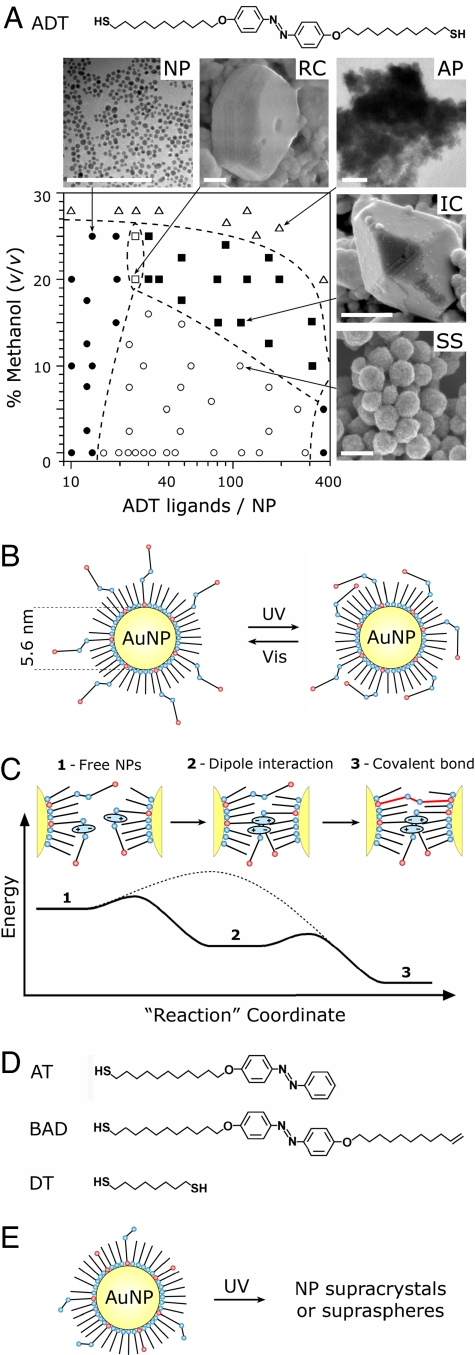Fig. 1.
Phase diagram and mechanism of LISA. (A Upper) Structure of the photoswitchable dithiol azobenzene ligand (ADT) mediating LISA of nanoparticles. (Lower) Phase diagram showing various types of suprastructures obtained by LISA for different numbers of ADT ligands adsorbed onto each NP and for different concentrations of methanol in methanol/toluene mixtures. Each point corresponds to a separate experiment. NP, unaggregated NPs; RC, light-reversible crystals; AP, amorphous precipitate; IC, irreversible crystals; SS, supraspheres. (Scale bars: 100 nm.) The numbers of ligands per one NP were determined from solution concentrations according to the method described in detail in SI Appendix, sections 3 and 4. (B) The azobenzene groups of ADT ligands can be toggled between trans and cis conformations by using, respectively, UV and visible light. (C) Light-induced dipoles of cis-ADT ligands mediate NP self-assembly and allow covalent cross-linking of the assembled particles. Dashed line represents qualitatively an energy barrier for cross-linking in the absence of dipole–dipole interactions. After initial aggregation because of dipole–dipole interactions (Center), the NPs can bind covalently via dithiol linkages displacing weakly bound DDA (Right; note that cross-linking via the trans isomer is shown only for clarity; in reality, the alkyl chains of ADT ligands should be long enough to allow cross-linking by the cis-dithiols as well). (D) Model compounds used to investigate the roles of dipole–dipole forces and cross-linking effects in LISA. (E) A scheme of a nanoparticle coated with “decoupled” photoswitchable (AT), cross-linking (DT) molecules, and DDA capping agent. With all these components present on the surface, NPs can self-assemble into ordered phases analogous to those formed by NPs covered with ADT/DDA. This approach, however, is impractical because it requires adjustment and control of the surface concentrations of three species, DDA, AT, and DT.

